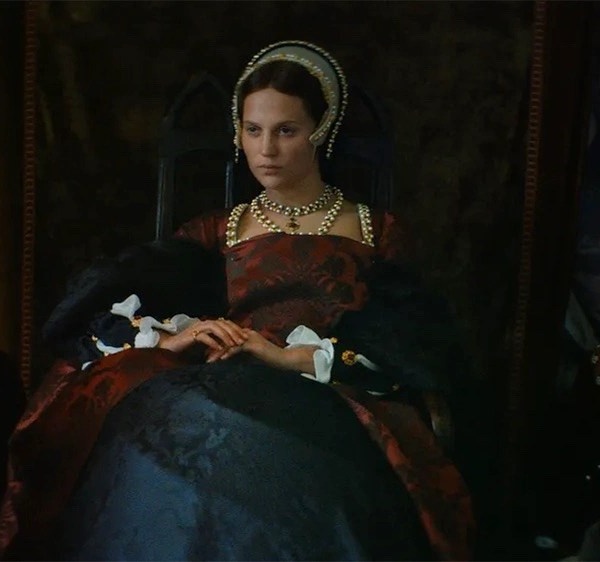Founded in 1996, Rehabilitation Through the Arts (RTA) helps incarcerated people “develop critical life skills through the arts,” per the program’s website. The organization currently offers different arts-based workshops across multiple New York correctional facilities, but theater remains their flagship program. Members of the prison population stage classic and contemporary plays alongside developing original works for the benefit of their peers and families.
“Art as therapy” might be a hoary concept in the privileged abstract, but within the context of a punitive system all but designed to degrade, there’s genuine merit to the idea that creative collaboration can help foster empathy and reconnect a person to their shared humanity. In fact, the proof is in the pudding: Less than three percent of RTA members return to prison vs. 60% of the prison population nationwide. By providing a safe space to be vulnerable and inhabit different perspectives, RTA offers a humane alternative to criminal justice, which primarily (and futilely) focuses on punishment as a means to an end.
The final minutes of “Sing Sing,” based on John H. Richardson’s Esquire article “The Sing Sing Follies,” features a montage of recorded scenes from real theatrical productions staged by RTA. Witnessing a demographic so easily stereotyped as hardened lose themselves within a theatrical setting, even in brief snippets, carries plain emotional weight. In its strongest moments, Greg Kwedar’s film lives up to the real thing by capturing the power of acting for its own sake, not only as an exercise in compassion but also a gateway to personal reflection. In its weakest, it uses acting as a cover for an undercooked, sentimental script.
“Sing Sing” primarily follows John “Divine G” Whitfield, played by Colman Domingo, a founding member of the RTA who helps helm the group’s new production while preparing for an impending clemency hearing. Like the real Divine G, who has a “story by” credit and makes an early cameo in the film, Domingo’s character was falsely imprisoned for a crime he didn’t commit and spends his time in the eponymous maximum-security prison boning up on his legal bona fides while writing multiple novels and plays. A role model for his peers, Divine G routinely flexes his acting and writing skills in RTA workshops and takes pleasure in being an artistic leader.
But when Divine G encourages the hard-edged Clarence “Divine Eye” Maclin, who plays himself and also shares a “story by” credit, to join the RTA, his confidence in his knowledge and leadership abilities takes something of a hit. Divine Eye challenges stale stereotypes almost immediately when he appears on screen: One minute he’s intimidating someone in the yard during a drug deal, the next minute he quotes “King Lear.” When he suggests to the other RTA members that they stage an original comedy instead of a drama that Divine G wrote, everyone quickly warms to the idea. He even wins a chance to perform Hamlet’s “To be, or not to be” speech over Divine G, who erroneously assumed he was the only member auditioning for the role.
Domingo excels at accentuating Divine G’s magnanimity and ego-driven pretensions. The character takes demonstrable pleasure in being the best performer on stage, which Domingo conveys by channeling his storied thespian background, and struggles to hide his annoyance and jealousy towards Divine Eye’s innate swagger. Meanwhile, Maclin impresses with his unselfconscious performance that barely conceals a well of guarded hurt that he inevitably accesses on stage with the help of the RTA. The frenemy-turned-brother chemistry between Domingo, the tested performer, and the newcomer Maclin organically emanates from the actors as well as the characters they play.
Formerly incarcerated performers, many of whom are RTA alums and now criminal justice advocates, comprise the bulk of the “Sing Sing” supporting cast, who primarily appear in the RTA group scenes. We watch them as they audition for various roles, perform acting exercises, and share their emotions. It’s here that “Sing Sing” somewhat hews to documentary practices (or at least resembles a docudrama), and it’s all the better for it. By simply centering his largely non-professional cast, Kwedar embraces a tender intimacy that can’t otherwise be easily replicated. Their palpable authenticity and on-screen imperfections is a simple testament to the film’s commitment to accuracy.
In fact, “Sing Sing” generally highlights the filmmakers and crew’s extensive research into prison life and the RTA program, which extends to production design of the individual cells and the staging of “Breakin’ the Mummy’s Cod,” a time-traveling musical comedy written by the group’s director Brent Buell (Paul Raci). “Breakin’ the Mummy’s Cod” was an actual play staged by the RTA and written by the real Buell. A true camel in the “horse designed by committee” sense, it features a role for every RTA member and includes pirates and gladiators, Shakespearean speeches, and even Freddy Krueger. “Sing Sing” doesn’t obscure the goofiness of the production, but highlights the potential for personal growth that comes with staging it.
“Sing Sing” hardly falters as activism, but it too frequently relies on its two main performers to paper over the film’s myriad dramatic limitations. While Domingo and Maclin have believable chemistry as actors, the characters as written feel stock in spite of their real-life inspirations. Their exchanges carry a predictable energy and the emotional beats each scene requires of them feel programmatic. (In this scene, Divine Eye is frustrated; in this scene, Divine G is frustrated, etc.) Moreover, the script telegraphs their individual character arcs from a mile away, which undercuts the film’s emotional power in the back half. At some point, everything begins to feel expected and you’re just watching talented people hit their marks.
Too often watching “Sing Sing,” you can feel the film’s manufactured drama push up against its embedded realism. The film’s immersive elements, and its valiant efforts to eschew prison film stereotypes, are commonly at war with a narrative at best designed to be instructive rather than compel on its own merits. “Sing Sing” has an unfortunate tendency to explicate rather than exhibit, which comes through in clumsy dialogue and visual clichés, like an early shot of a bird at the edge of the prison walls. Plus, Kwedar and photographer Pat Scola lean on long handheld takes and frequent close-ups to broadly convey “immediacy,” but the film works much better in a restrained visual capacity. An overhead shot of Divine G’s tossed cell after a guard searches it for contraband stands in sharp contrast to its immaculate nature early in the film, and cleanly expresses the casual dehumanization inherent in the system.
“Sing Sing” works fine as an actors showcase — Domingo casually commands the screen by using every tool at his disposal, and he meshes easily with the non-professional cast — but as the film strives harder to emotionally affect its audience, its shortcomings become more apparent. It buzzes as an ensemble piece, but merely murmurs as a two-hander; it accumulates potency by giving a voice to the voiceless and loses it as soon as it forces them into prescribed screenwriting mechanics. “Sing Sing” serves as a great advertisement for the RTA, an admirable and successful program that deserves all the support it can get, but it feels somewhat lacking as an actual production.
Grade: B-
A24 will release “Sing Sing” in theaters on Friday, July 12.




